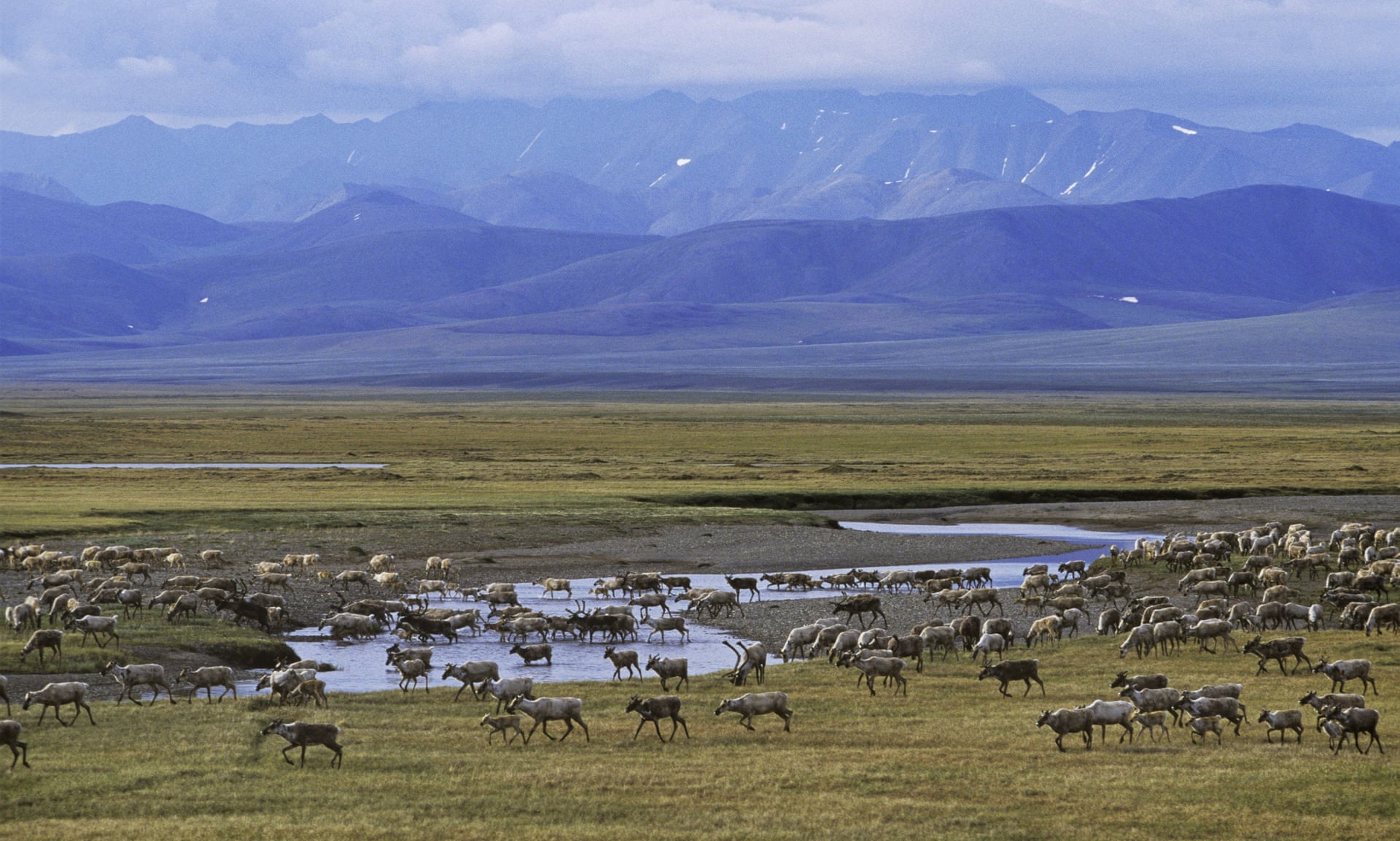Still US President, Donald Trump auctioned oil leases in the Arctic National Wildlife Refuge
Sentinel-3 OLCI FR & SLSTR RBT acquired on 01 June 2020 at 20:29:40 & 21:09:11 UTC
Sentinel-2 MSI acquired on 01 June 2020 at 21:35:41 UTC
Sentinel-1 CSAR IW acquired on 19 September 2020 from 02:57:35 to 02:58:00 UTC
Sentinel-2 MSI acquired on 01 June 2020 at 21:35:41 UTC
Sentinel-1 CSAR IW acquired on 19 September 2020 from 02:57:35 to 02:58:00 UTC
Keyword(s): polar, cryosphere, coastal, pack ice, sea ice, biodiversity, natural resources, oil & gas, energy, USA, United States
Describing the Arctic national wildlife refuge, the U.S. Fish & Wildlife Service writes: "The Arctic Refuge contains remote, complete, and undisturbed lands across five different ecological regions: lagoons, beaches and saltmarshes of coastal marine areas; coastal plain tundra; alpine tundra of the Brooks Range; the forest-tundra transition south of the mountains; and tall spruce, birch, and aspen of the boreal forest."


"The Porcupine caribou herd crossing the Turner River. Drilling in the refuge has been fiercely opposed for decades." - Source: Rex/Shutterstock
"Arctic Refuge is a vast, remote wilderness where wildlife thrive. Arctic Refuge is home to some of the most diverse and spectacular wildlife in the arctic. The Refuge's rich pageant of wildlife includes 42 fish species, 37 land mammals, eight marine mammals, and more than 200 migratory and resident bird species. It is a haulout for seals, a year-round home for Dall Sheep, a caribou nursery, a hunting ground for wolves and ermine, and a maze for lemmings. Mammals here range in size from the Pigmy shrew, weighing 3 g, to the bull moose, weighting nearly 640 kg. Birds come here to nest, raise young, feed, and rest. Many then migrate to destinations in the United States and beyond."
In an article published in the Guardian on Tuesday 17 Nov 2020, Rachel Fritts alerted: "In a last-ditch attempt to make good on promises to the oil and gas industry, the Trump administration is rushing to formalize plans to drill for oil in the Arctic national wildlife refuge before Joe Biden takes office. On Tuesday, the Bureau of Land Management initiated the process with a formal “call for nominations”, inviting input on which land tracts should be auctioned off in the refuge’s [6100 km²] coastal plain region."
"The call for nominations lasts 30 days, which would allow the bureau to begin auctioning leases for land tracts to oil and gas companies just days before Biden’s inauguration on 20 January. The coastal plain region, where land could be auctioned, is considered some of the country’s last pristine wilderness, containing dozens of polar bear dens, essential migratory bird habitat, and caribou calving grounds held sacred to the Gwich’in people."
"In addition to rushing lease sales in the refuge, the Trump administration has fast-tracked seismic testing for oil on the coastal plain, trimming a permitting process that would normally take up to a year down to a few months. The testing, proposed by Kaktovik Inupiat Corporation, could begin as soon as December and run until May. Environmentalists oppose testing, which involves 41 000 kg 'thumper' trucks that could leave permanent scars on the landscape and disturb denning polar bear mothers."
"The Arctic refuge’s coastal plain has been at the center of a fierce battle over oil extraction on public lands for decades. It was earmarked for potential development in 1980 but remained protected until a Republican-controlled Congress added a provision to a tax bill in 2017 that finally opened the area to oil development."
"The Gwich’in people, who have lived in the area for thousands of years, have consistently opposed drilling in a land they call iizhik gwats’an gwandaii goodlit, or “the sacred place where life begins”. Their opposition has remained strong as they have borne the brunt of the climate crisis’s impacts. The call for nominations comes during a month when Arctic sea ice is at a record low and temperatures are at a record high for this time of year."
The Guardian journalist Emily Holden already warned on 13 Sep 2019: The Bureau of Land Management (BLM) "estimates oil extracted and burned from the area could put the equivalent of between 0.7 million and 5 million metric tons of carbon dioxide in the atmosphere each year. At the maximum, that would be the same as roughly a million more cars on the road annually. In reviews of a draft impact statement, the US Fish and Wildlife Service said the BLM underestimated the climate impacts of the oil leases."
"Parts of BLM’s final statement suggest – contrary to evidence – that the current rapid heating of the earth is cyclical rather than human-made. 'Much attention in recent decades has focused on the potential climate change effects of [greenhouse gasses], especially carbon dioxide (CO2), which has been increasing in concentration in the global atmosphere since the end of the last ice age,' the document said." "Global scientists, however, have concluded that human actions, including burning fossil fuels, are the primary driver of the 1C temperature increase observed since industrialization."











